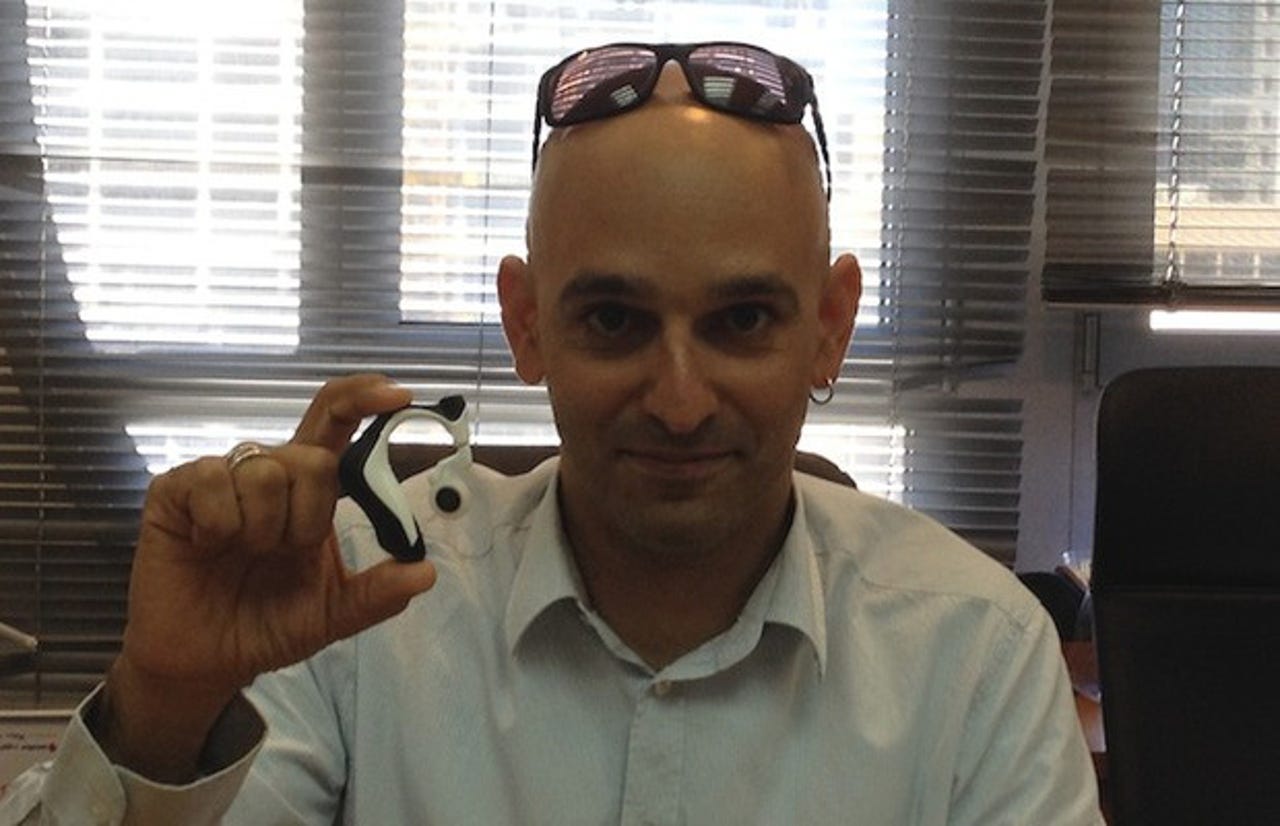Intel's vision of our wearable future: From onesies to wetsuits


Like many tech companies, Intel is betting wearable technology will be the next big thing — and when it comes to wearables, Intel is thinking far bigger than the smartwatches and fitness bands now flooding the market.
From its Jarvis headset (Intel's smart headgear, designed to take on Google Glass) to its Edison development platform and Galileo microcontroller board, Intel is gearing up for a revolution in devices.
"We expect 500 million wearables to be sold annually by the end of the decade," an Intel spokesman told ZDNet. "We've spoken to a lot of companies in recent months and they have a lot of great ideas on how they would use wearable tech."
If an Intel video is to be believed, wearable tech is far more than pedometers and fancy wristware. In the video, T-shirts change their design to reflect a song playing on a personal music system; a jacket changes its design pattern to attract a butterfly, and when it lands on the jacket a dialog box pops up with information about the creature; a surfer gets updates on water temperature and conditions, with the information displaying on his wetsuit and beamed back to the meteorological service; and a connected smart patch displays biometric data like blood pressure and calories burned off through exercise, and lets users scan menus to get information about the nutritional content of food on a restaurant menu.
When all those things will be available, Intel won't say — but it's those kinds of products that the company sees coming out onto the market, sooner rather than later.
Right now, about 50 million devices are sold annually in the wearable tech category — most of them fitness bands that can read a wearer's pulse and sync up biometric data with an app.
Of course, those devices will continue to be popular in future, but it's not the segment that's going to grow the wearables market tenfold within the next five years.
"Wearable tech becomes more valuable, and popular, when it has the function as well as the form," the spokesman said; the more attractive the tech is and the more it fits in with users' sense of style, the more likely it is to become widely adopted. To that end, Intel recently announced several partnerships with manufacturers and retailers including high-end New York fashion emporium Barneys.
But, in order for clothing makers to develop the right form factors, Intel has to make the tech small, powerful, and flexible enough for chips and processors to be added to clothing and devices without being too noticeable.
For that, Intel is developing several platforms, including Edison, a system on a chip processor with integrated wi-fi, Bluetooth, memory, and storage. Edisons are the size of an SD card, small enough to be integrated with clothing, and a recently-upgraded model includes a sensor hub that almost any kind of sensor can be connected to.
Along with Edison, Intel also offers Galileo, slightly larger and compatible with the Arduino software platform, which can perhaps provide the company with ideas it can take to its partners to develop wearables based on its technology.
Galileo boards are designed to work with the open-source Arduino software platform, which can use sensor information to control devices — useful for participants in the Intel Make it Wearable Challenge, a contest that the company has been running for the past months in order to see what wearable enthusiasts come up with, with the grand prize winner set to be awarded $500,000. The contest is open to residents of 27 countries, including Israel.
At CES, Intel unveiled a product based on its technology that is a good indication of the direction the company expects the wearable market to go. The Mimo baby monitor contains a slew of sensors to measure respiration, body temperature, movements, sleeping position, and other data, allowing parents to immediately find out when baby needs to be changed, moved, and taken to the doctor.
While it can only be considered a 'wearable' to a certain extent, because the actual sensor device is detachable, Intel is aiming for technology that is actually woven into clothing and accessories. Part of that development involves ensuring that the integrated components can survive day-to-day wear and tear, including laundering.
Then there's Jarvis, also introduced at CES. Jarvis is an always-on digital assistant, currently embedded in a Bluetooth-style earpiece, but which could be deployed in other form factors (the Intel video features smartglasses which appear to include a Jarvis).
According to Intel, Jarvis will work both online and offline, and will feature voice processing that will enable it to compete with Apple's Siri and Google Now.
Intel hasn't revealed much about Jarvis, although it will say that Israeli teams were involved in its development (along with Intel teams in other locations) — but Intel's recent acquisition of a natural language processing platform from Israeli startup Ginger, which could fit right in with Jarvis voice recognition. While Intel has not shared the financial details of the Ginger acquisition or how its technologies might be put to work, but the deal is understood to be worth around $30m.